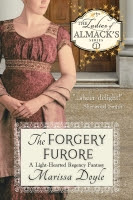It will likely come to no surprise to those of you who
regularly read or write books about the nineteenth century that the blacksmith
was a key figure still. Various articles
of metal, such as horse shoes and hanging bells, still needed to be created,
and most were still manufactured by hand.
But I ran across a phrase this week that intrigued me. A children’s book on English trades segregated
blacksmiths, whitesmiths, and brightsmiths.
And that called for some research (lovely, lovely research!).
It turns out that a blacksmith specialized in iron and steel. Steel was still created in small batches and
was very expensive until well into the century. Often in stories and movies, blacksmiths wield
a mighty hammer over their anvils to produce everything from nails to
hand-and-a-half broadswords. Some,
however, created finer items like locks and keys.
The whitesmith, on the other hand, might specialize in tin or
other lighter-colored metal.
Brightsmiths took the duller metals and created items polished to a high
sheen. While a blacksmith worked on
metal heated in a forge, whitesmiths and brightsmiths worked on cold metal.
The trade book I mentioned listed the key tools of the smith
as the forge for heating the metal, the anvil and block for holding it, and the
hammer, tongs, hole punches, and pinchers for manipulating it. While I have often seen the trough of water
used in movies for cooling the metal, the author insisted that it was used for
sprinkling on the coals to make them produce more heat.
To become a smith, a young man would apprentice. Perhaps he might start with stoking the fire
or separating the metals his master would need for the task at hand. Later, he would move up to shaping the metal
himself, simple pieces at first and then more complicated ones as his skill
progressed.
Wrought iron was a very popular material in the early
nineteenth century. It was used inside and
outside the house for various decorations.
Hinges, gates, chandeliers, and weather vanes might all be made of
wrought iron and were sometimes gilded, like these gates at Hampton Court.
A smith who caught the fancy of the aristocracy might do
quite well for himself. Be he a blacksmith,
whitesmith, or brightsmith.







2 comments:
Yes so many types but I'm not sure I would like to hammer away all day and work near the heat.
Me either, J. Grace! I do love to see some of the wonderful wrought iron creations, though. There is as much artistry as hard work in what they do.
Post a Comment